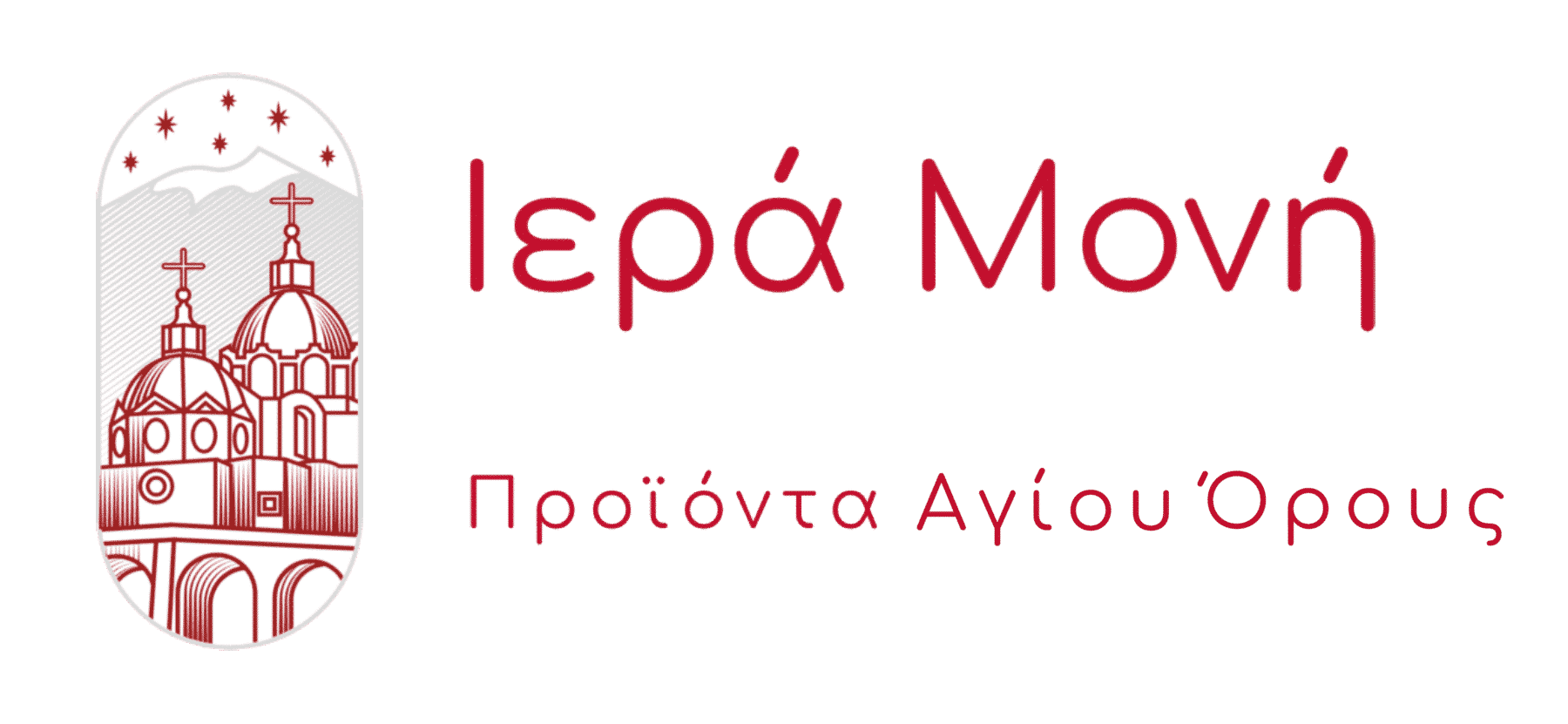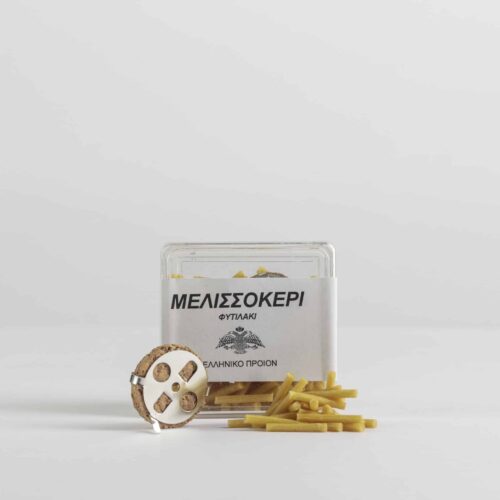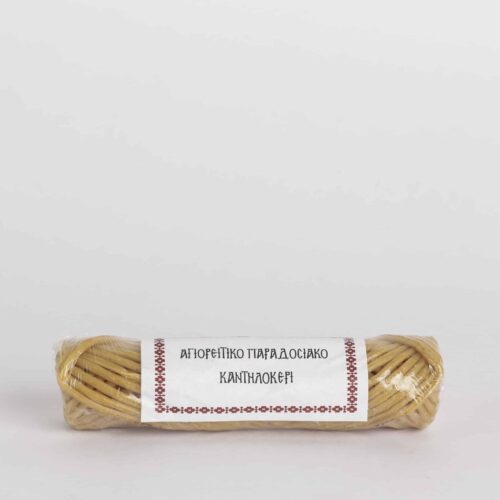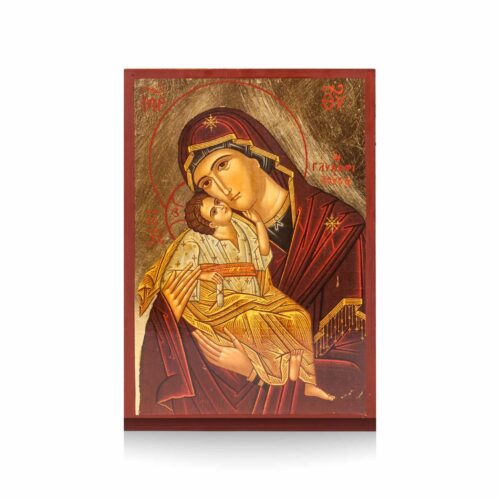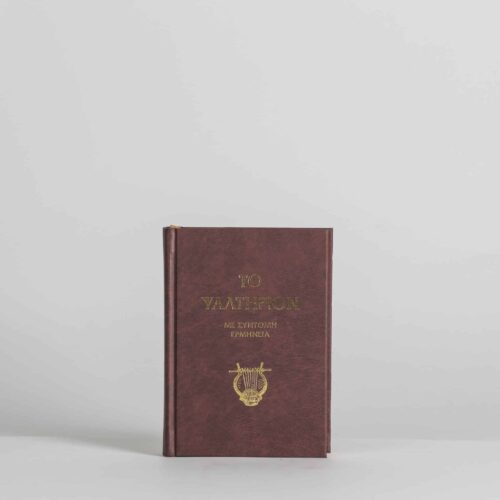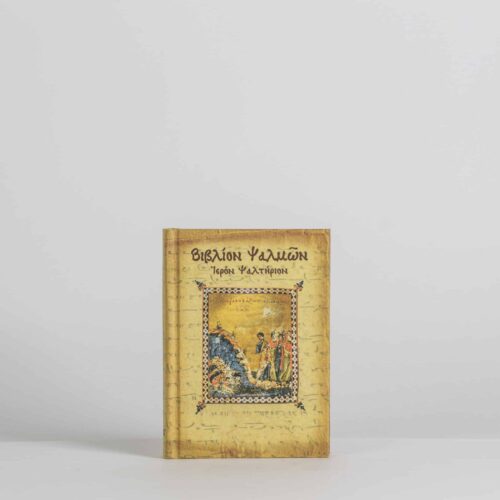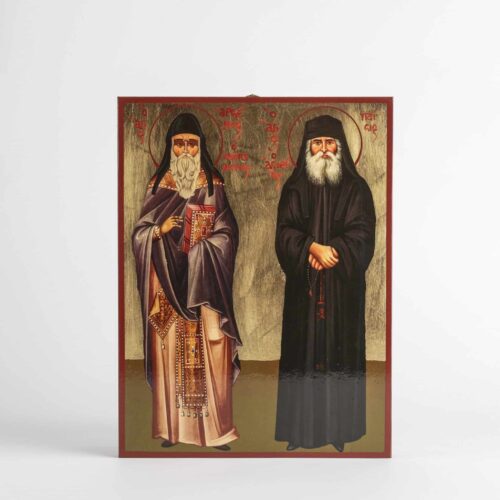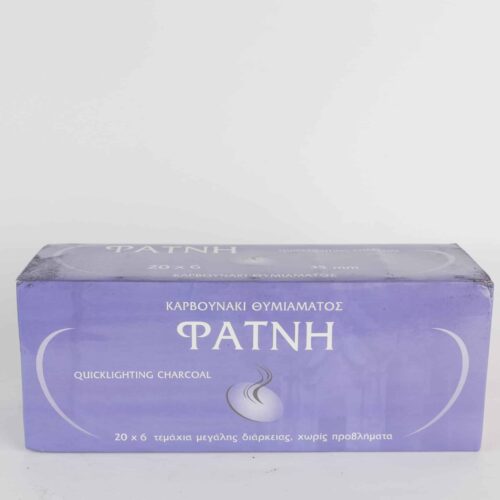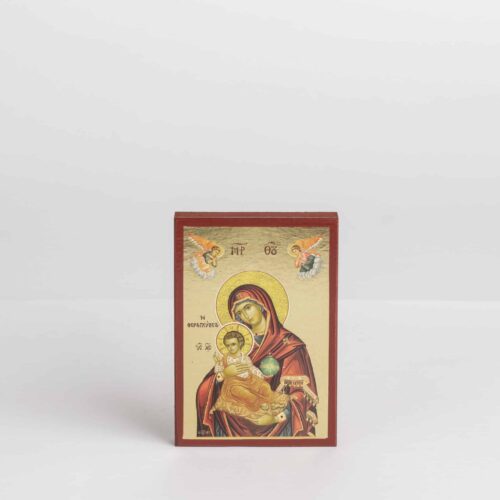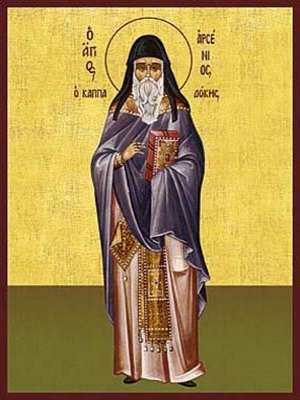
Saint Arsenios of Cappadocia 1840 - 1924
He was born in the faras of Cappadocia in 1840
He had a brother named Vlasios and his name was Theodoros later Fr. Arsenios.
At a young age they were orphaned, first by their father and a little later by their mother. They were protected by their mother's sister, in Farasa…
But God saved things so that from a young age Theodoros made the decision to become a monk, after his significant salvation from certain drowning in the torrent Evkasis! Because the moral perpetrator, Vlasis's older brother, was also present in his salvation, the Lord saved him from being influenced as well, so he became a great singer of Byzantine music.
To continue his studies in Nigde, he left for Smyrna. There he learned well the Greek letters and the ecclesiastical, but also the Armenian and Turkish, as well as a little French! Finishing his studies in 1866 (26 years old), passed through Farasa and Nigdi, where he said goodbye to his aunts.
In the same year (1866) he consecrated in the Holy Monastery of Flavians (Zinji-Dere) of Timios Prodromos. There he soon became a monk, named Arsenios. At that time, however, they needed teachers, so Metropolitan Paisios II ordained him a deacon and sent him to Farasa, to teach the abandoned children letters! The Turks wanted the six Greek small villages to be illiterate, which is why Fr. Arsenios, because there was no other teacher, agreed to sacrifice his lonely peace…
At school he had no desks, but goat skins and so the Turks thought he was teaching the children to pray! Other times he took them to the chapel of Panagia in Kanchi, inside a cave.
When he was thirty years old, in 1870, he was ordained an elder in Caesarea, with the title of Archimandrite, and received the blessing of the clergy. Then he went to Jerusalem for a pilgrimage and since then the Pharisees called him Hatzefendis.
The miracles of Saint Arsenios and the Prayers
1). Kyriakos Seferidis, the Reader of Fr. Arsenios, narrated that they had brought a Turkala from the Teleleides chained, with a terrible demon, called Tetevi, which was read by Hatzefentis with the Gospel and he immediately expelled the demon from the woman .
2). Anestis Karaoutoglou narrated that, when the Armenians were massacred by the Turks, about three hundred people had come to Farasa, in order to loot the village and slaughter it! Hatzefentis gathered the women and children and went to the chapel of the Virgin Mary and prayed. The savage Turks did not enter the village, because as they said, Saint Chrysostom did not leave them! Indeed, the Saint appeared on the bridge, stretched out his arms and stopped them.
3). A Turk had once been brought to Hatzefentis, said Vassilios Karopoulos, who had turned his head to the right and remained motionless! This Turk was a bandit and bloodthirsty. He had turned to many doctors, to no avail. Hadjefentis, after reading it and putting his head back in its place, made many and strict recommendations for the continuation of his life. He even set a rule for him, as well as for his whole family, who were… wild beasts.
4). Prodromos Eznepidis narrated that once many Chets (wild Turks) had come to the village (Farasa). He was the president of the village, but he was also sick in bed, so unable to organize the defense. He said: "Go, lad, to the wish of Christ and expel the Turks from entering our village." Immediately the president got well and with his wish, he gathered the lads of the village and they were expelled without any injuries!
4). Stella Koglanidou is said to have brought to her paternal home, in Farasa, a silent thirty-year-old Turk, and her father brought him to Fr. Arsenios. While Hatzefentis was reading the Gospel to him, he was speechless!
Our Faith is not for sale!
Money for he never took cures! Nor did he hold them in his hands when they gave to the Temple for those in need.
1). Once upon a time, a demon-possessed Turkish bride went from Tsachiroudes, with chains, to Hatzefentis, to read it. Osios accepted them, even though he was locked up that day - he did this two days a week - and it made sense for them to release her. When he was released, he rushed to the old man, grabbed one of his legs and bit him!
While she was holding the Gospel, she did not open it, despite hitting her gently on the head three times and the demon left immediately! The woman started crying and kissing the bitten leg. Her father fell at his feet and begged him to accept his entire case (the pouch with his money). Take everything, it's yours, because you saved my child. And the Orthodox priest said to him: "Keep your money. Our faith is not for sale!
2). Once a Turk gave him two bahtsis animals (as a gift), because his sterile wife had two children with the blessed amulet sent to her by Hatzefentis. Then the old man made a stern remark to him with the following words: “Did you not have poor people in your village? What did you carry with me here? To tell you the apherim (bravo)? I do not collect baksisia "!!!
3). In the Church it was an arch, in which some left optional money for the poor. The poor went alone and got what they needed. They were more afraid to take, so that God would not punish them !!! The old man never took the money in his own hands, not only so that the passion of avarice would not rule him - a phenomenon common to some clergy - but mainly so that it would not cross the minds of either Christians or Turks, that he has the priesthood for a profession !!!
4). Not only did he not take the offerings of the Church home or give them to his closest friends, but he secretly sent them at night to unhappy families with the singer (Prodromos).
5). But in laziness he never gave! Once a lazy and drunk man went and asked him appropriately. The old man was in his cell and gave him a barley bran. And he says to him: "I eat from them". The lazy man did not accept it, but insisted on doing so. Then Osios said to him: "Are you not ashamed, forty-five-year-old young man, to sit all day and think devils and get drunk and beg?"
He then said to Prodromos: "Go to the Church and go to the river, and if the lazy one comes there, then give it to him. He also told the lazy man to start his rusty engine. Go to the river to get them and catch fish that are plentiful and eat. The lazy man not only did not go to the river, but τον accused him in the village of being… stingy! The old man was full of joy that he was being unjustly accused…
Its end in earthly life
After the Asia Minor catastrophe (1922) Fr. Arsenios remained in Farasa until August 14, 1924. Then the Turks forced him to follow his flock during the exchange of populations… After much suffering they arrived by boat in Agios Georgios and happy they celebrated the big day of the Cross (September 14, 1924).
He was now eighty years old when he arrived in Corfu. He lived only two weeks in the Castle of Corfu and operated twice, in the Church of Agios Georgios and one week in the Hospital, due to his age and mainly the hardships. He slept on November 10 of the same year. As he had predicted years ago
Paisiou reasons
-
Wicks from pure beeswax 30g with candelabra1,20 €
-
Candlestick wick handmade from beeswax 1pc5,50 €
-
Icon of Panagia Glykophilousa 20X14 Wooden Gold Plated15,00 €
-
Censer Nickel Plated 12cm 9902N10,20 €
-
Knitted Rosary of Mount Athos 50 Knots10,00 €
-
Product on offerThe Psalter in Municipal Trebela 677pOriginal price was: €14,96.10,50 €Current price is: €10,50.
-
Product on offerBlack Frankincense Frankincense of Agios Kyprianos 50gOriginal price was: €5,30.4,50 €Current price is: €4,50.
-
Psalter the 150 Psalms of the Prophet David9,50 €
-
Saint Arsenios and Saint Paisios Icon 20X26 cm Wooden Gilded20,00 €
-
Product on offerIncense charcoals Manger 35mm Large Box 20pcsX6Original price was: €12,00.8,50 €Current price is: €8,50.
-
Product on offerIcon of Virgin Mary Healing 10X7cm Gold printOriginal price was: €7,42.5,50 €Current price is: €5,50.
-
Agioreitiko incense 50g of the Holy Monastery of Saint Gregory4,00 €
